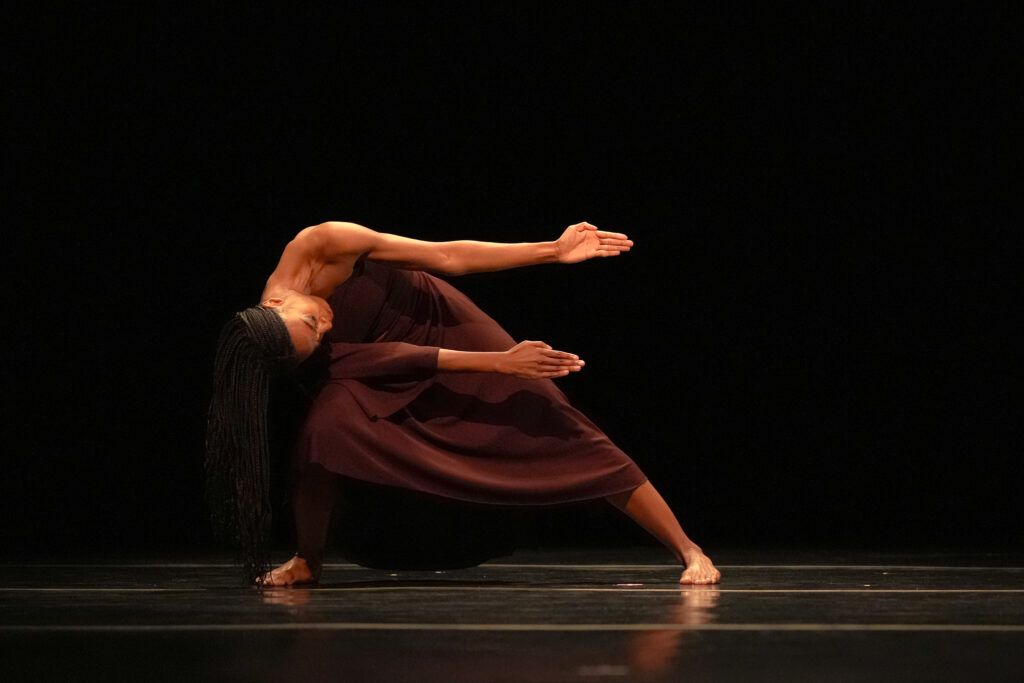VIEWPOINTS – Dance Roundup: MARTHA GRAHAM DANCE COMPANY at The Joyce and DANCE THEATRE OF HARLEM at City Center
- By drediman
- April 14, 2025
- No Comments
Over the last week or so, I had the opportunity to attend spring season performances by two of the city’s most historic and revered dance companies, Martha Graham Dance Company and Dance Theatre of Harlem. As per usual, read on for my thoughts on these thoughtfully curated nights of dance.

MARTHA GRAHAM DANCE COMPANY
The Joyce Theater
This past weekend, Martha Graham Dance Company (RECOMMENDED) concluded its two-week spring season at The Joyce Theater with a trio of programs that collectively represented a well-balanced mix of company classics — primarily created by Graham herself — and contemporary works, showcasing the dancers’ discipline and exciting versatility. The Joyce residency was also the start of the company’s centennial celebration (this year marks the troupe’s astonishing 99th season), a deservedly lengthy and elaborate three-year affair as America’s oldest dance company. Of the Graham restagings, I marveled at Deaths and Entrances, Errand into the Maze, and Frontier. Despite being choreographed between 1935 and 1947, each still registered as starkly modern creations — especially Graham’s celebrated collaborations with artist Isamu Noguchi — both markedly sculptural and psychologically evocative. These are historic works to be treasured and maintained. Particularly fascinating was Revolt and Immigrant, Virginie Mécène’s recent pairing of solos inspired by Graham pieces from even earlier (the original 1920s choreography for these have been lost to time). These “riffs” layered a contempary dynamism onto the formative solos, creating an illuminating dialogue between past and present. Also making a welcome return was the company’s exuberant, distinctly bluegrass version of Agnes de Mille’s seminal 1942 ballet Rodeo, although I did admittedly miss the live music-making that accompanied past performances of it. In terms of contemporary works, I continued to swoon over Jamar Roberts’ fierce yet devastating We the People, which fit in beautifully as an unsettled, defiant closer to the “American Legacies” program. And despite the crowd-pleasing buzz it left in its wake, Hofesh Schechter’s hyper-kinetic, rave-like Cave left me indifferent.

DANCE THEATRE OF HARLEM
New York City Center
Over at New York City Center, I was also able to take in the opening night performance of Dance Theatre of Harlem’s 2025 spring season (RECOMMENDED). It was a substantial program that was greeted by the audience with sustained enthusiasm as the evening unfolded. First up was Cookout, a pleasant and inviting new work by artistic director Robert Garland — as the company’s most usual of suspects, he was an obvious choice for the leadership role when he was appointed in 2023 — which enjoyed its world premiere just last month. Set to a collection of funk and soul music by Jill Scott, Cymande, Caron Wheeler, and Brass Construction, the dance is segmented into four sections that together bask in Black Joy. Indeed, a laid-back sense of community and well-being pervaded piece, even if a bit of repetitiveness eventually crept into the party. Given that one of the company’s most popular pieces is William Forsythe’s show-stopping Blake Works IV (The Barre Project) — it’s now a signature piece — it’s no surprise that the DTH would engage in another of the contemporary choreographer’s works. Enter The Vertiginous Thrill of Exactitude, Forsythe’s heightened 1996 homage to classical ballet technique. Using Schubert’s Allegro Vivace from Symphony No. 9, the piece plays right into the company’s strengths — superb lines, athleticism, and gorgeous extensions — creating a captivating vision of neoclassical ballet. Then there was the world premiere of Jodie Gates’ Passage of Being, which in my mind was the highlight of the evening. Danced with compelling serenity by six dancers, the work is a dreamy, fluid creation that seemed to float atop the electronic score by Ryan Lott and Son Lux. The evening concluded with a composed rendition of George Balanchine’s Donizetti Variations, continuing the company’s longstanding tradition of presenting works by the legendary choreographer.

 Copyright © 2025
Copyright © 2025
Leave a Reply